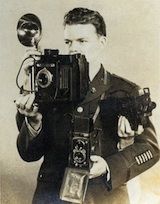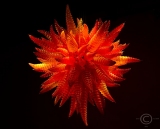- Forum
- General Discussion | Introductions | Off Topic Forum
- Photography General Discussion
- To prime or not?
To prime or not?
Post #77381
I have heard rave reviews about this lens, but if I shoot with my flash while I am indoors, will I really see a difference? Or better yet, where would I realistically see a difference.
Post #77387
I guess I am just trying to decide if the 200 dollars is worth it. Or if I should just use my flash and be happy until my skills can match my equipment.
-

- MLKstudios
- Banned
-
- D800 ;-)
- Followers: 72
- Posts: 4480
-
Points:
2
Post #77389
Matthew
In my course, I encourage all students purchase a 50mm lens, if all they have is the kit lens. It changes how you work and see with a camera. It takes it from a fancy P&S to one you control.
Matthew L Kees
MLK Studios Photography School
www.MLKstudios.com
[email protected]
"Every artist, was once an amateur"
-

- Country gal
- New Kid On The Block
-
- Nikon D300s
- Followers: 5
- Posts: 49
-
Points:
0
Post #77391
The greater light gathering power of an f/1.8 lens rather than a much slower lens means that your AF system will have a slight edge. You know how the kit lens sometimes hunts for focus when using an off-center AF point? That type of behavior is minimized by having a fast, f/1.8 prime lens that is optimized for focusing at one length,and which is not a compromise.
The other place you will notice a difference is the lack of zoom on the prime; after using a particular fixed focal length lens, you start mentally framing shots in your mind's eye; there is less indecision about where to stand, and instead of debating about how close or how far to be, or what zoom setting to select, you will find yourself composing shots almost by instinct, once you become familiar with the angle of view of a particular prime lens on a particular camera format. Zooms by their very nature work differently than high-speed prime lenses do.
-

- Country gal
- New Kid On The Block
-
- Nikon D300s
- Followers: 5
- Posts: 49
-
Points:
0
Post #77399
-

- John Landolfi
- Super User
-
- Nikon D3S, D7100, Sony RX10, Canon G11, F4s, F2sb, RetinaflexIV etc, etc
- Followers: 1205
- Posts: 21605
-
Points:
40394
Post #77611
-

- Henry Peach
- Apprentice
-
- I currently use a 5DII or Sony Nex-3 most of the time.
- Followers: 50
- Posts: 2925
-
Points:
16
Post #77663
Country gal wrote: ...the f/1.8 lens will allow you to see through the viewfinder better...
Many DSLR stock focusing screens are optimized for use with zooms these days, and won't ever get brighter than f/2.8 (I think this effects AF too, not just looking through the viewfinder). This is the case with Canon. I had to install a different focusing screen to get a brighter viewfinder with my prime lenses.
In low light situations I'll usually take all the extra exposure I can get. The difference between f/1.8 and f/2. can seem significant.
At focusing distances of 10' or closer the difference in DOF between f/2-ish and f/4-ish should be fairly obvious.
I am a big fan of smaller, lighter lenses. For me that's an advantage.
As far as sharpness goes I can't speak for the zoom lenses you've been using, but I've done extensive comparisons between the Sigma, Tamron, and Canon f/2.8 zooms I own and my primes. Common advice says the primes stopped down a few to f/2.8 ought to blow away the zooms at their max aperture, yet I can't see a difference even when extreme pixel peeping. I have shown my test shots to many photographers, and if the pics are unlabeled they don't seem to be able to differentiate primes from zooms either.
A prime lens will affect the quality of your photography much in the same way a non-adjustable wrench affects the quality of repairs for a mechanic. IMO, not much. Some days the prime will be better because of it's strengths, other days will belong to the zoom. Whether you succeed or fail at what you are trying to accomplish probably won't depend on what lens you are using.
If cropping in camera is important then a zoom lens trumps a prime. Perspective is controlled by camera placement. I position the camera to get the perspective I need, then I crop in the camera by adjusting focal length. With a prime lens I may need to crop out of the camera. This was a bigger deal to me when I shot 35mm film. Some DSLRs today allow for quite a bit of out-of-camera cropping and still retain decent image quality. I don't mind cropping big film or 12+ megapixels.
- Forum
- General Discussion | Introductions | Off Topic Forum
- Photography General Discussion
- To prime or not?
Latest Reviews
The Olympus Pen E-P7 is an affordable micro four thirds mirrorless camera with 4K video capabilities, a 20.3MP sensor, and 121 focus points, making it a solid entry-level camera for beginners.
The Panasonic G9 II is a 25.2-megapixel micro four thirds camera with numerous features that make it punch out of its weight class, like 779 AF points, 5.8K video, and weather sealing.
The Fujifilm XT5 is a 40MP mirrorless camera capable of 6.2K video at 30p. With those specs, it’s an ideal choice for photographers needing a camera to pull double duty for imaging and video.
The Canon EOS R100 is an entry-level mirrorless camera introduced in 2023. But just because it’s an entry-level camera doesn’t mean it’s a bare-bones camera. Find out why in this review!
Forum Top Posters
-
1Ruby Grace 7 posts
-
2Scotty 7 posts
-
3TCav 5 posts
-
4Nefarious 3 posts
-
5Roger Lang 3 posts
-
6CharleyL 3 posts
-
7ShutterPal 3 posts
-
8James L 2 posts
-
9Blacklord5... 2 posts
-
10Chris Briggs 2 posts
Latest Articles
The Olympus Pen E-P7 is an affordable micro four thirds mirrorless camera with 4K video capabilities, a 20.3MP sensor, and 121 focus points, making it a solid entry-level camera for beginners.
Starting a photography business is one thing; sustaining your business over a long period of time is another. Use the tips in this professional photography guide to build something with longevity!
The Panasonic G9 II is a 25.2-megapixel micro four thirds camera with numerous features that make it punch out of its weight class, like 779 AF points, 5.8K video, and weather sealing.
Cinematic photography is an interesting genre that combines photographic and videographic skills along with effective storytelling techniques. The result? Highly impactful images!
Newborn photography requires skill, the right gear, and a lot of patience. This beginner’s guide discusses critical topics that will help you be more prepared for before, during, and after the shoot.
To fill the frame means to expand the footprint of the subject in your shot. Get in close, zoom in, crop the image, or use other techniques to bring the subject to the forefront.
With these simple yet effective beginner photography tips, you can avoid some of the common mistakes beginners make and get improved results with your images.
Urban photography is a genre showcasing features in urban settings. You can photograph people, architecture, mass transit, and many other subjects. Learn how to do so in this guide!















